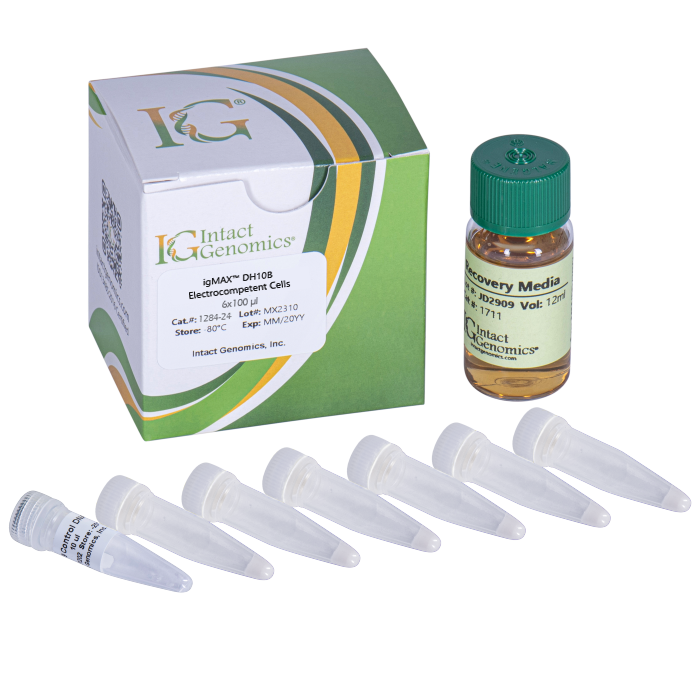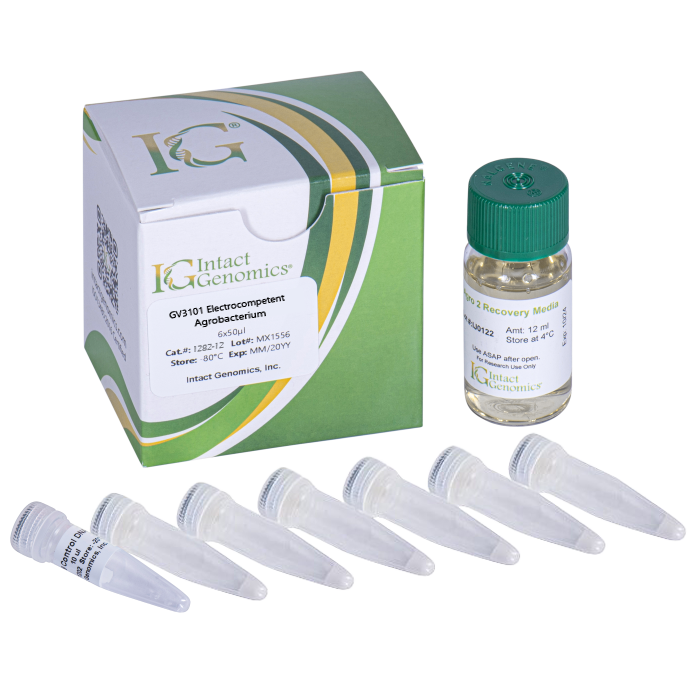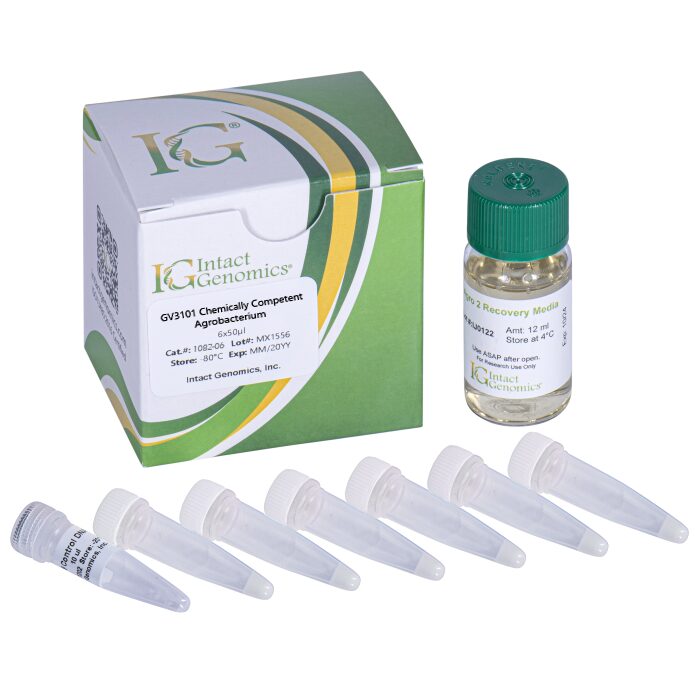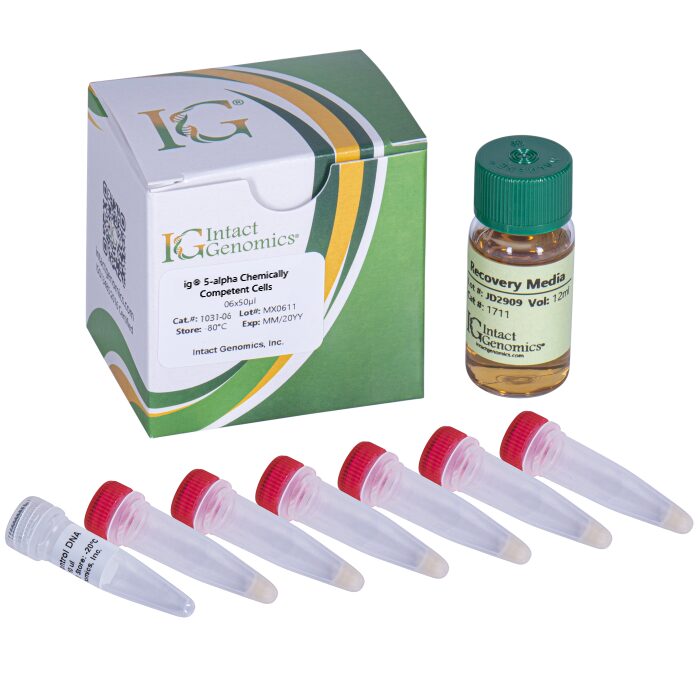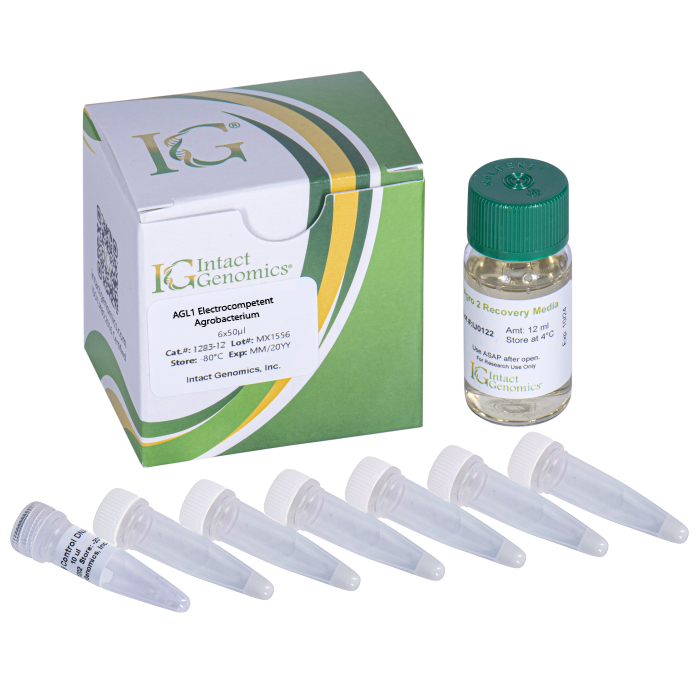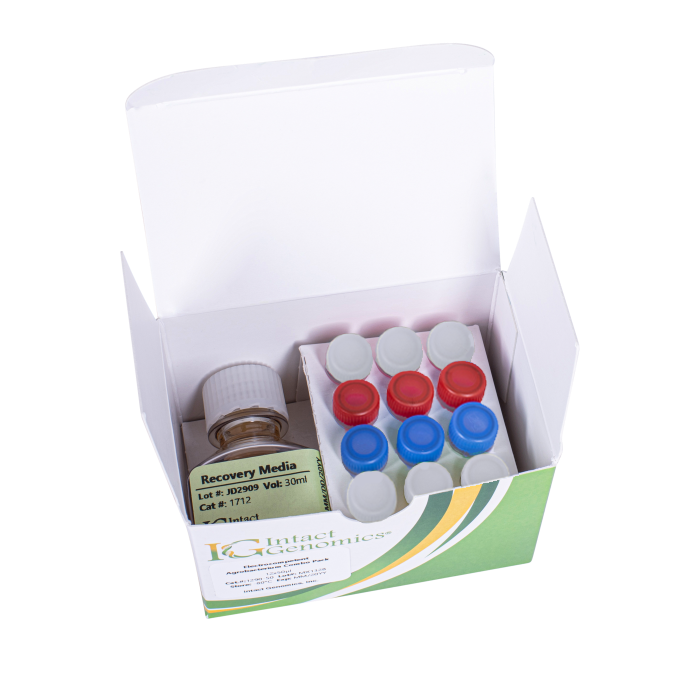Engineered for superior transformation of large DNA molecules (≥10 kb up to 350 kb), igMax™ DH10B ElectroCompetent Cells deliver exceptional performance with transformation efficiencies of ≥5 × 10¹⁰ cfu/µg DNA. Ideal for cloning large plasmids, BACs, and other high-molecular-weight constructs.
igMax™ DH10B ElectroCompetent Cells
Price range: $395.00 through $715.00
Description
Intact Genomics igMaxTM DH10B derivative electrocompetent cells are suitable for demanding cloning situations such as synthetic bio-applications, BAC cloning, assembling large multi-DNA fragments, or cloning difficult targets requiring the greatest number of transformants possible. Utilizing proprietary manufacturing methods, these cells allow for effective transformation of all large DNA molecules (≥10kb up to 350kb)!
Intact Genomics igMaxTM DH10B cells vs. Competitor’s DH10B Derivative transformation efficiency

Extremely large DNA molecules can effectively be transformed at a rate much higher than ANY competitor, as shown in the figure above.
Specifications
Competent cell type: ElectroCompetent
Derivative of: DH10B
Species: E. coli
Format: Tubes
Transformation efficiency: ≥ 5 x 1010 cfu/µg pUC19 DNA
Blue/white screening: Yes
Shipping condition: Dry ice
Reagents Needed for One Reaction
igMaxTM DH10B Electrocompetent cells: 25 µl
DNA (or pUC19 Control, 10 pg/µl): 1 µl
Recovery medium: 1 ml
Storage
igMaxTM DH10B Electrocompetent cells: -80 ºC
pUC19 control DNA: -20 ºC
Recovery medium: 4 ºC
Genomic Features
Intact Genomics igMaxTM ElectroCompetent DH10B cells have the following features:
- ≥5 x 1010cfu/µg efficiency with electroporation.
- 5~10×107 for 100~150 kb large DNA
Genotype
F – mcrA ∆(mrr-hsdRMS-mcrBC) endA1 recA1 φ80dlacZ∆M15 ∆lacX74 araD139 ∆(ara, leu)7697 galU galK rpsL (StrR) nupG λ-
Quality Control
Transformation efficiency is tested by using pUC19, ~50kb, and >100kb plasmids. The pUC19 control DNA is supplied with the kit and using the protocol given below. Transformation efficiency should be ≥5 x 1010 CFU/µg pUC19 DNA. Untransformed cells are tested for appropriate antibiotic sensitivity.
General Guidelines
Follow these guidelines when using Intact Genomics igMaxTM DH10B Electrocompetent cells:
- Handle competent cells gently as they are highly sensitive to changes in temperature or mechanical lysis caused by pipetting.
- Thaw competent cells on ice and transform cells immediately following thawing. After adding DNA, mix by tapping the tube gently. Do not mix cells by pipetting or vortexing.
Note: A high-voltage electroporation apparatus such as Bio-Rad Gene Pulser II #165-2105, capable of generating field strengths of 16 kV/cm is required.
Calculation of Transformation Efficiency
Transformation Efficiency (TE) is defined as the number of colony forming units (cfu) produced by transforming 1µg of plasmid into a given volume of competent cells.
TE = Colonies/µg/Dilution
Transform 1 µl of (10 pg/µl) pUC19 control plasmid into 25 µl of cells, add 975 µl of Recovery Medium. Dilute 10 µl of this in 990 µl of Recovery Medium and plate 50 µl. Count the colonies on the plate the next day. If you count 250 colonies, the TE is calculated as follows:
Colonies = 250
µg of DNA = 0.00001
Dilution = 25/1000 x 10/1000 = 0.00025
TE = 250/.00001/.00025 = 10.0×10101284 1284-24
Additional information
| µl | 6×100µl, 12×100µl |
|---|
Transformation Protocol
Use this procedure to transform Intact Genomics 10B igMaxTM Electrocompetent cells. Do not use these cells for chemical transformation.
1) Place sterile cuvettes and microcentrifuge tubes on ice.
2) Remove competent cells from the -80 °C freezer and thaw completely on wet ice (10-15 minutes).
3) Aliquot 1 µl (1 pg-10 ng) of DNA to the chilled microcentrifuge tubes on ice.
4) When the cells are thawed, add 20 μl of cells to each DNA tube on ice and mix gently by tapping 4-5 times. For the pUC19 control, add 1 µl of (10 pg/µl) DNA to the 25 µl of cells on ice. Mix well by tapping. Do not pipette up and down or vortex to mix, this can harm cells and decrease transformation efficiency.
5) Pipette 26 µl of the cell/DNA mixture into a chilled electroporation cuvette without introducing bubbles. Quickly flick the cuvette downward with your wrist to deposit the cells across the bottom of the well and then electroporate.
6) Immediately add 974 µl of Recovery Medium or any other medium of choice to the cuvette, pipette up and down three times to re-suspend the cells. Transfer the cells and Recovery Medium to a culture tube.
7) Incubate tubes at 37 °C for 1 hour at 210 rpm.
8) Dilute the cells as appropriate then spread 20-200 μl cells onto a pre-warmed selective plate. For the pUC19 control, plate 50 μl of diluted transformants onto an LB plate containing 100 μg/ml ampicillin. Use sterilized spreader or autoclaved ColiRoller™ plating beads to spread evenly.
9) Incubate the plates overnight at 37 °C.

